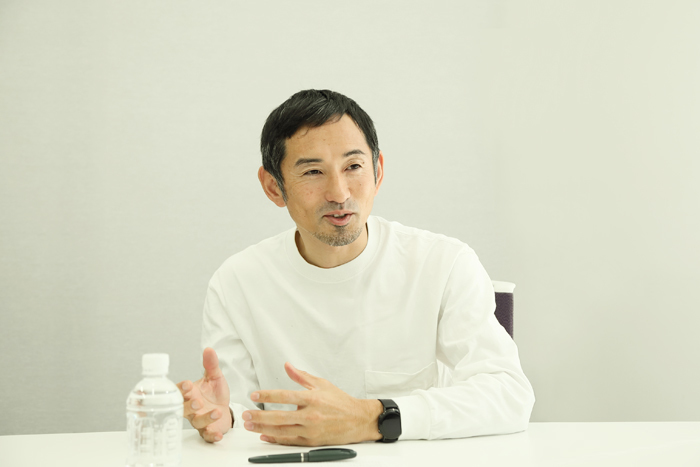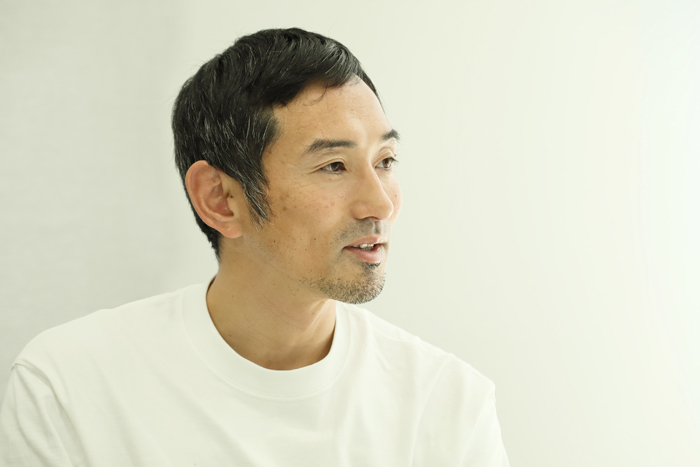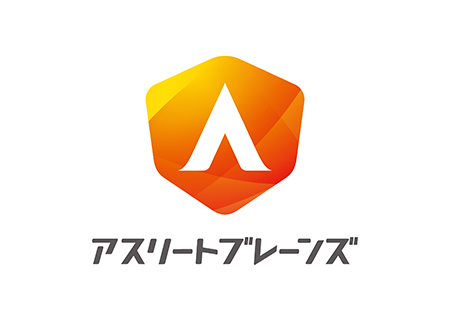A serial interview column where Mr. Dai Tamesue freely discusses "things on his mind right now." The only set theme is "What is autonomy? What is tolerance?" Mr. Tamesue shares his thoughts on various "things on his mind" in response to the mysterious "interviewer's" unexpected prompts. Well now. What kind of stories will emerge this time...? Stay tuned.
──Continuing from last time ( #33 ), we'll again explore the theme: "What exactly is breathing?"
Tamura: Thank you for having me.
──This time, I'd like to start with the mechanics of breathing. There's nasal breathing and mouth breathing, right? Generally, nasal breathing is recommended, and as kids, our mothers often scolded us, "Hey, your mouth is open again!" (laughs). But when I think of athletes, it seems overwhelmingly like "mouth breathing" is the norm... I mean, you don't see swimmers breathing through their noses.
Tamesue: That's right. During competition, mouth breathing becomes more common. The reason is that "the nose can't keep up."
──What do you mean by "can't keep up"?
Tametsu: Because if you don't deliver massive amounts of oxygen to the brain and body, you'll collapse. If you only breathe through your nose, the volume just isn't enough.
──I see. Another thing I wanted to ask about breathing techniques is "chest breathing" versus "diaphragmatic breathing." I think ordinary people tend to breathe with their chest, which can lead to nervousness during presentations or trouble singing well at karaoke. Do athletes consciously practice diaphragmatic breathing?
Tamesue: That's right. I don't consciously think about it during competition, but I do focus on it during weight training. If you don't engage your core and breathe from your abdomen, you simply can't lift heavy barbells.
──I've never lifted a barbell myself, but I can imagine. So, what exactly is the relationship between breathing and strength?
Tamesue: Power comes from exhaling from the abdomen. That's why you naturally want to grunt when lifting heavy weights. Martial artists, for instance, aim to attack the moment their opponent inhales.
──So the moment you're replenishing oxygen, you're vulnerable?

Tamesue: Kendo is similar. If the shout of "Meeen!" doesn't match the act of striking with the bamboo sword, it doesn't count as a point. While it's now formalized as a rule, I think that's the original principle. It was more about striking the opponent's skull than cutting them, so you couldn't do it without putting your whole body and soul into it.
──Related question: How can one improve "cardiorespiratory fitness"? Athletes often train at high altitudes, right?
Tamura: In a word, I think it's about improving your transport capacity.
──Transport capacity? You mean oxygen?
Tamese: Exactly. It's the ability to efficiently and swiftly deliver limited oxygen throughout the entire body without waste. People living at high altitudes have high cardiopulmonary capacity because their bodies naturally train to breathe and transport oxygen in thin air. However, even if you live at a low altitude, your body adapts to it. So, if someone from high altitude comes to, say, Japan's lowlands and stays for a while, their cardiopulmonary capacity is said to decrease.
──Because they were breathing at low altitude.
Tamesue: It's not just cardiopulmonary function, but the human body adapts flexibly, so it can go either way. Of course, there are limits—someone living at low altitude might get altitude sickness if they suddenly climb a high mountain. But given time, they adapt properly. To high places and low places alike.
──Perhaps one reason Heidi, Girl of the Alps, fell ill in Frankfurt was due to breathing, too (laughs). (Continued in #35)
(Interviewer: Web Dentsu Inc. News Editorial Department)
From Nakanishi, Athlete Brains Production Team
This is the second installment on the theme of "breathing." I'm Nakanishi, joining the Athlete Brains team starting this time. I was so amazed by Mr. Tamesue's vast knowledge that I got completely absorbed in listening and almost forgot to breathe myself (laughs). It's said that while working on computers or smartphones, we unconsciously develop "screen apnea syndrome" – our breathing becomes shallow, or we hold our breath for several seconds. This causes our bodies to stiffen, and probably means oxygen isn't reaching our brains either. Just as breathing affects an athlete's performance, our ideas and work efficiency might also be influenced by our breathing. I want to be mindful of that. However, hearing about high-altitude training for "cardiorespiratory capacity," I realized that placing yourself in slightly challenging environments at work can build strength, and vice versa. I was greatly inspired by how much business professionals can learn from athletes' insights!
Athlete Brains Production Team: Dentsu Inc. / Akinori Hibi (3CRP) · Kanako Nakanishi (BXCC) · Genta Arahori (Late Bureau)
"Athlete Brains," spearheaded by Dai Tamesue.
For details on this team that leverages knowledge cultivated by athletes to solve challenges in the world (businesses and society), click here.











